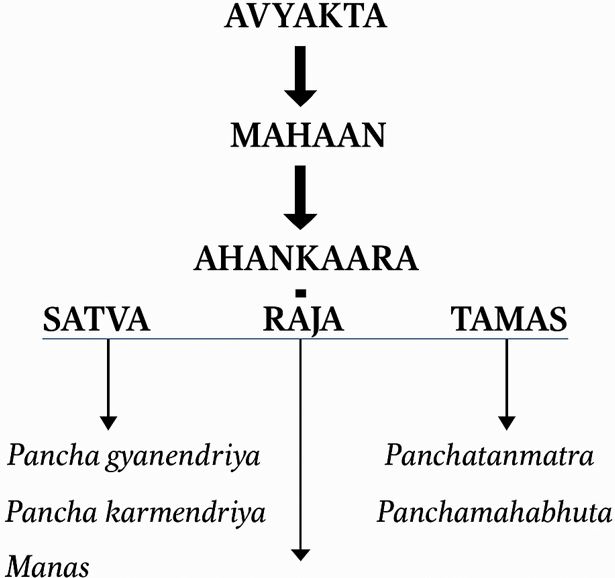A review article on Mana and its impact on health
DOI:
https://doi.org/10.21760/jaims.10.6.30Keywords:
Ayurveda, Tridosha, Panchmahabhuta, Manas, Satva, Rajas, TamasAbstract
Ayurveda has evolved from its roots taking a pace at its basic concept in preservation and promotion of health and prevention and cure of diseases. Manas being an important entity in maintain physical health is an important topic of discussion. In the modern era we learn and understand health being state of complete physical, mental and social well-being. We find references of Mana in Atharva Veda, Charaka Samhita, Sushruta Samhita and Vagbhatt Samhita. Ayurvedic theory of mental health is based on the combination of the Trigunas, Tridosha and Panchmahabhuta and the combination of three Doshas and Trigunas inherited at birth indicates an individuals’ Prakriti. Kapha Prakriti individuals are said to be less eclipsed by Dukkha (grief). Acharya Charak has clearly explained some diseases like Unmada, Apasmara, Attavaabhinivesha as ailments affecting Manas. Some other diseases like Mada, Murcha and Sanyasa are also mentioned where Acharya Charak mentioned the involvement Raja and Moha along with Tridoshas and Raktavahi and Sangyavahi Srotas. In Pragyaparadh Pragya which is Buddhi or knowledge when get disturbed by wrong conducts give rise Tridosha Prakopa (vitiation) and thereby leading to pathology. So, in this way among Trividha Chikitsa, Ayurveda has also emphasized on its treatment modalities like Satwajay (to stop oneself from wrong conducts). Our ancient system of healthy living offers the holistic approach to mental health care with integration of mind, body and soul. On the other hand, Psychology has its foundation in Ayurveda. As human beings are combination of mixed emotions and the medium of expression of those emotions is Psychology which play an important role in maintaining mental health.
Downloads
References
Sharma RK, Dash B. Charak Samhita, Sutra Sthana, Chapter 1, Shloka 41. Varanasi: Chowkhamba Sanskrit Series Office; 2016. p. 25.
Shastri AD. Sushruta Samhita, Sutra Sthana, Chapter 15, Shloka 48. Varanasi: Chowkhamba Sanskrit Sansthan; 2020. p. 84.
Sharma RK, Dash B. Charak Samhita, Sutra Sthana, Chapter 8, Shloka 4. Varanasi: Chowkhamba Sanskrit Series Office; 2016. p. 164.
Shastri AD. Sushruta Samhita, Sharir Sthana, Chapter 1, Shlokas 4–7. Varanasi: Chowkhamba Sanskrit Sansthan; 2020. p. 1–2.
Tripathi B. Ashtanga Hridaya, Sutra Sthana, Chapter 1, Shloka 20. New Delhi: Chowkhamba Sanskrit Pratishthan; 2022. p. 17.
Shastri AD. Sushruta Samhita, Sharir Sthana, Chapter 4, Shloka 34. Varanasi: Chowkhamba Sanskrit Sansthan; 2020. p. 44.
Sharma RK, Dash B. Charak Samhita, Sharir Sthana, Chapter 1, Shloka 62. Varanasi: Chowkhamba Sanskrit Series Office; 2016. p. 327.
Sharma RK, Dash B. Charak Samhita, Sharir Sthana, Chapter 1, Shloka 18. Varanasi: Chowkhamba Sanskrit Series Office; 2016. p. 315.
Sharma RK, Dash B. Charak Samhita, Sharir Sthana, Chapter 1, Shloka 19. Varanasi: Chowkhamba Sanskrit Series Office; 2016. p. 315.
Sharma RK, Dash B. Charak Samhita, Sharir Sthana, Chapter 1, Shloka 20. Varanasi: Chowkhamba Sanskrit Series Office; 2016. p. 315.
Sharma RK, Dash B. Charak Samhita, Sharir Sthana, Chapter 1, Shloka 21. Varanasi: Chowkhamba Sanskrit Series Office; 2016. p. 315.
Sharma RK, Dash B. Charak Samhita, Sutra Sthana, Chapter 1, Shloka 57. Varanasi: Chowkhamba Sanskrit Series Office; 2016. p. 41.
Shastri AD. Sushruta Samhita, Sharir Sthana, Chapter 1, Shlokas 4–7. Varanasi: Chowkhamba Sanskrit Sansthan; 2020. p. 1–2.
World Health Organization. Available from: https://www.who.int















